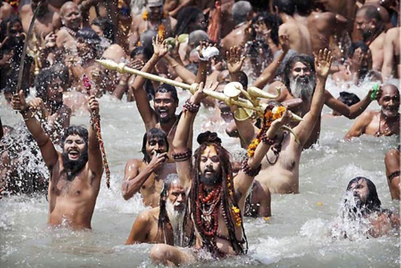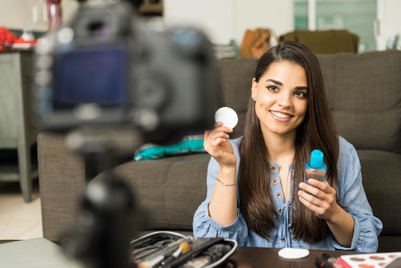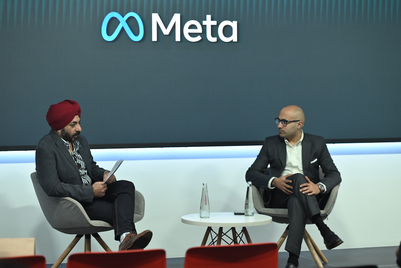
In today’s sea of flashing screens and endless ads, it’s tougher than ever for brands to cut through the noise. A catchy slogan or striking visual can still turn heads, but to leave a lasting impression?
That takes something more profound—an experience. As attention spans grow shorter, consumers are craving more meaningful interactions, and that’s where experiential marketing steps in.
Experiential marketing—where brands create immersive, engaging events or digital interactions—has evolved into a powerful tool for marketers looking to build genuine connections with consumers. Today’s shoppers aren’t just after products; they want personalised, memorable experiences.
According to Forrester, 76% of consumers expect personalised engagement across all touchpoints, making experiential marketing a must-have, not a passing trend.
Shaping new consumer expectations
With the rise of experiential marketing, brands are getting creative in how they engage consumers. Take Coca-Cola’s ‘Open Happiness’ campaign, which ran from 2009 to 2016.
Through augmented reality (AR) vending machines, the beverage company created an interactive experience that drove a 12% boost in engagement and an 8% increase in sales. The campaign proved that by blending digital personalisation with in-the-moment engagement, brands can achieve remarkable impact.
“Experiential marketing has transformed from simply promoting products to delivering immersive and meaningful interactions,” said Naina Parekh, founder of luggage brand Eume, which champions experiential marketing to elevate its brand. Its ‘Travel isn’t just about the destination; it’s about the luxury’ campaign, fuelled by influencer storytelling and striking visuals, encapsulates the allure of travel, positioning its products as aspirational rather than purely functional.
Similarly, Divanshi Gupta, founder of The Marcom Avenue, sees today’s consumers as driven by connection rather than just visuals. “Consumers today expect more than just impressive visuals. They want to feel understood and connected,” she remarks.
For a skincare client, her team developed a virtual reality (VR) experience allowing customers to ‘try on’ products in real-time, matching tones and personal preferences. The result? A unique shopping experience that cut through digital clutter with futuristic charm.

Beyond ROI: Measuring success with new metrics
Traditional metrics often fall short when it comes to experiential marketing, where the focus shifts from mere visibility to genuine engagement. “In experiential marketing, where ROI can be difficult to measure, we rely on a range of metrics like engagement, brand sentiment, and customer feedback,” Parekh explained. These alternative metrics provide insights into emotional connection and brand loyalty, looking past short-term gains.
The industry is catching on: 89% of brands now track multi-dimensional ROI metrics like social sentiment and brand advocacy scores to gauge experiential marketing success, according to EventTrack.
Valay Lakdawala, CEO of NeoNiche, takes this approach further by using pre- and post-event surveys to monitor brand recall, reach expansion, immersion time, and customer loyalty. “Today’s audiences crave experiences that align with their values,” he noted, underscoring how brand experiences can build sustained loyalty.
A case in point is the Adidas campaign, ‘Create your own game.’ By collecting qualitative data through attendee surveys and facial recognition, Gupta claimed that the campaign improved customer retention by 34%. This highlights how non-traditional metrics like emotion-tracking often capture consumer sentiment far better than numbers alone.
Success in experiential marketing is increasingly measured by Return on Engagement (ROE), emphasising audience connection, emotional impact, and brand loyalty. Experiential communications agency Shobiz uses metrics like dwell time, content interaction, and social media engagement to gauge the quality of interactions.
"Instead of merely counting leads, we assess their quality by examining post-event behaviors, such as follow-up inquiries or further engagement,” said Sameer Tobaccowala, CEO of Shobiz. Its initiatives like YouTube Creator Collective and the Women’s Creator Collective reflect this approach, driving inclusivity and connecting creators, with ROE metrics capturing the long-term engagement often missed by traditional ROI measures.
Real-time data: The backbone of personalised experiences
Experiential marketers increasingly lean on real-time data to refine and steer campaigns dynamically. As Deloitte reports, brands utilising real-time data see a 41% lift in engagement—a testament to the power of responsive marketing. This data lets brands adjust messages, personalise interactions, and even pivot entire campaigns mid-stream to resonate with shifting consumer moods.
One of Lowe Lintas’ clients, Pepsodent, harnessed AI to offer free dentist consultations in Indonesia, where dental visits are rare. “In a country where people barely visit a dentist in their lifetime, the service is revolutionary,” said Sarvesh Raikar, president—creative at Lowe Lintas. A quick scan generates a dental health analysis and connects customers with a dentist, turning data into a critical tool for community support.

Gupta shared a campaign where her team used in-store sensors to track interest in different fashion collections, dynamically adapting promotions to social media activity. This helped the team achieve a 28% conversion lift, proving the effectiveness of data-led strategies. On a similar note, NeoNiche’s RFID-enabled wristbands at a sportswear event provided similar results, allowing attendees to navigate a personalised journey while strengthening the consumer-brand bond.
Sharing real-time data across departments has become essential for campaign adaptability, as seen in The Marcom Avenue’s recent electric vehicle campaign. Using an interactive test drive with an augmented reality (AR) app and geo-targeted ads, the agency achieved a 30% increase in test-drive sign-ups.
Crafting brand identity amid the experiential marketing boom
As experiential marketing goes mainstream, standing out becomes essential. It’s no longer enough to simply offer an immersive experience; campaigns must embody the brand’s unique identity, making storytelling and authenticity crucial.
Raikar noted that “tech plays a huge part in shaping experiential marketing,” and brands that incorporate authentic tech elements often achieve greater success. Lifebuoy, one of Lowe Lintas’ clients, has been doing this for a long while.
Their ‘H for Handwashing’ campaign redefined educational material, while integrating the internet-famous hippo Moo Deng to reinforce hygiene education. “The creative hook and the tech idea were in perfect sync,” Raikar emphasised.

Similarly, The Marcom Avenue turned a luxury watchmaker’s flagship store into an interactive museum with AR, transforming a standard store visit into an experience steeped in the brand’s heritage. Meanwhile, Tata CLiQ Palette’s AR beauty store, where consumers try virtual products in-store, showcases the trend of ‘phygital’ experiences—integrating the physical with the digital to create seamless, brand-consumer journeys.
Tech and sustainability: The future of experiential marketing
As brands embrace experiential marketing, tech-driven personalisation and sustainability are becoming essential to brand identity. With AI, brands can fine-tune experiences in real time, ensuring a personal journey for each consumer. And as eco-awareness grows, more brands are embedding sustainable practices within experiential campaigns.
Gupta points to Nike’s NIKELAND in the metaverse, which has recorded over 7 million interactions. “This shows how brands can leverage extended reality (XR) to create experiences that are not only engaging but also far-reaching,” she says.
Looking ahead, experiential marketing will hinge on the intersection of tech, data, and emotional connection. As tools like AI, VR, AR, and IoT make hyper-personalised experiences a reality, brands have unprecedented opportunities to foster genuine bonds with consumers. Experiential marketing, after all, is more than metrics; it’s about creating memories, building relationships, and leaving a legacy long after the campaign ends.
In the words of Gupta, “Experiential marketing often defies traditional metrics.” That’s because it isn’t just about the numbers. It’s about forming connections and crafting brand experiences that live on in consumers’ minds. Those brands that understand this will transform fleeting moments into long-term loyalty, elevating their position in a marketplace where authenticity reigns supreme.


.jpg&h=334&w=500&q=100&v=20250320&c=1)
.jpg&h=334&w=500&q=100&v=20250320&c=1)
.jpg&h=334&w=500&q=100&v=20250320&c=1)


.jpg&h=334&w=500&q=100&v=20250320&c=1)





.jpg&h=268&w=401&q=100&v=20250320&c=1)


.jpg&h=268&w=401&q=100&v=20250320&c=1)
.jpg&h=268&w=401&q=100&v=20250320&c=1)


